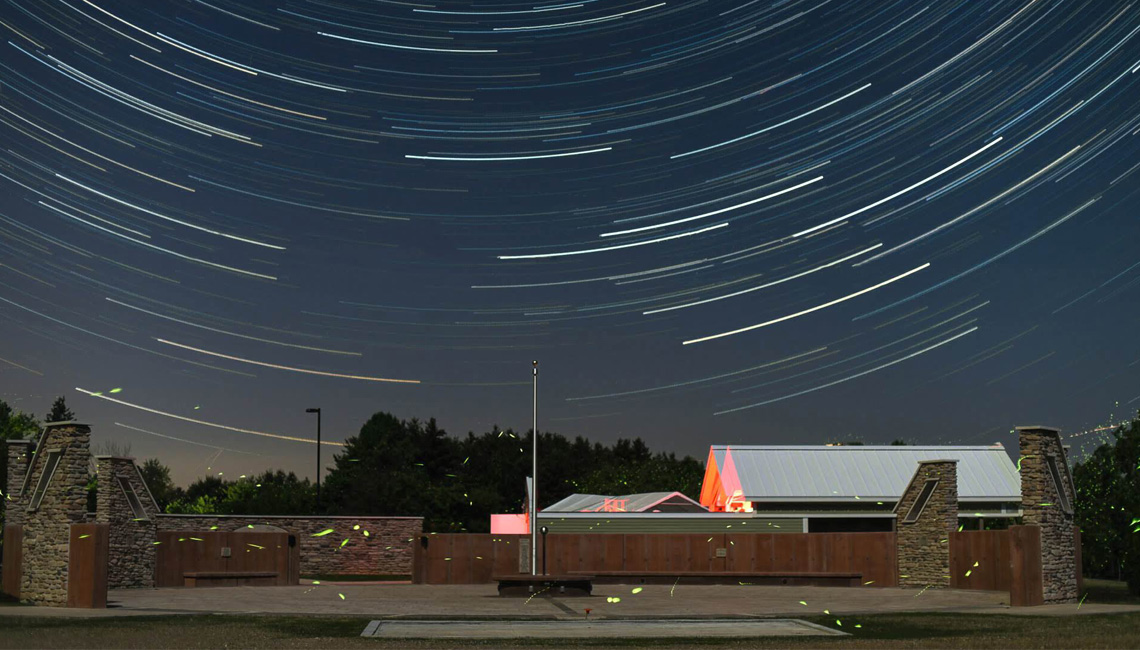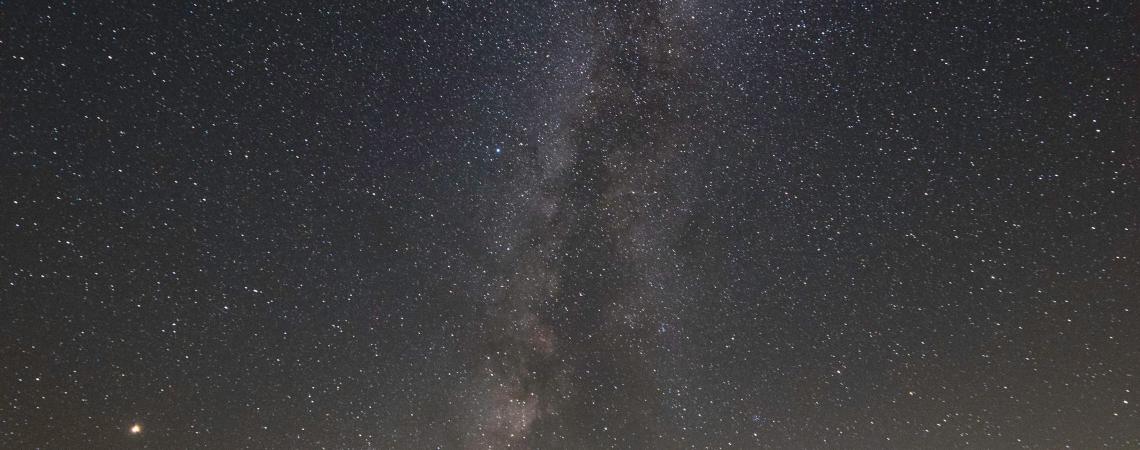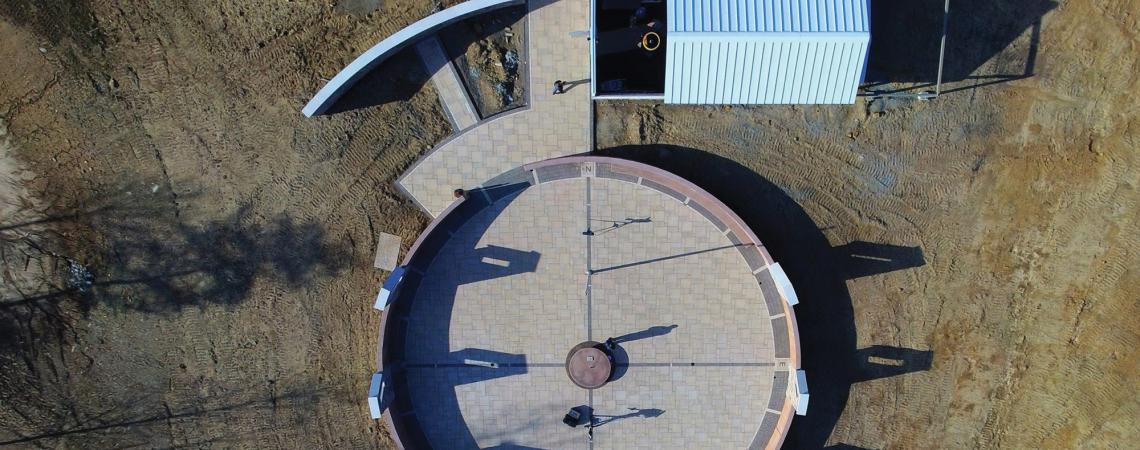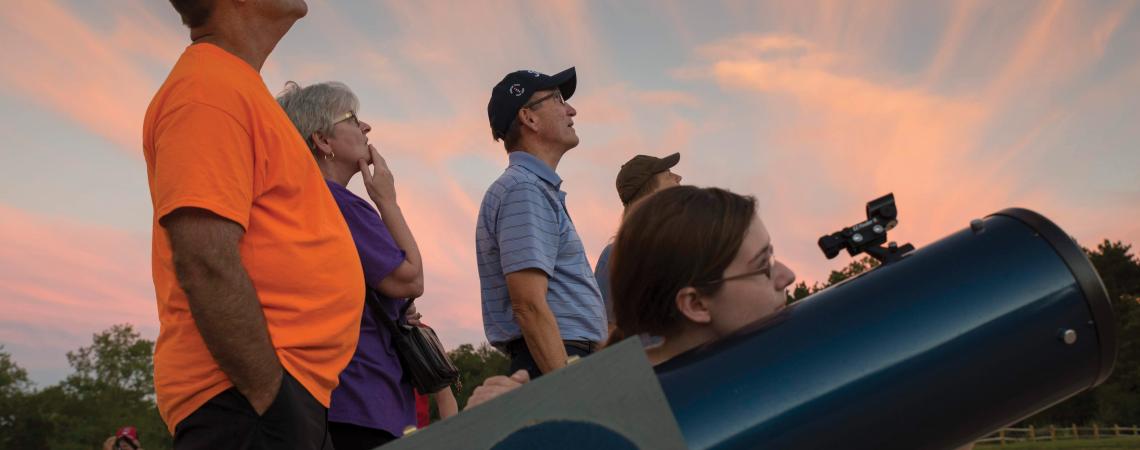Getting Brad Hoehne to stand still for a photo isn’t easy. The director of John Glenn Astronomy Park (JGAP) is so enthusiastic about sharing the wonders of the universe with visitors that he constantly points out the brightest stars, waves his arms to demonstrate the paths of comets, or makes circles with his hands to show how the orbits of Earth and Mars bring them closest together every 26 months.
“It’s a joy to talk to people about astronomy,” says Hoehne. “I’ve been stargazing most of my life, and this park is a great way to bring others into the fold and get them interested in science in general.”
“It’s a joy to talk to people about astronomy,” says Hoehne. “I’ve been stargazing most of my life, and this park is a great way to bring others into the fold and get them interested in science in general.”
Served by South Central Power Company, the park sits on an open patch of land within Hocking Hills State Park. It’s named for the Ohio-born-and-bred astronaut who was the first American to orbit the Earth. JGAP opened in 2018, but Hoehne had been thinking for years about creating a venue where the public could connect with the cosmos. “I got the idea in 2003,” he says. “I was giving a talk about the Perseid meteor shower, and a woman mentioned that it would be great to have a place to look at the stars on her own without having to pay something or drive for a long distance.”
While hikers and outdoors-lovers prize the pristine scenery and fantastic rock formations in southeast Ohio’s Hocking Hills, the region’s distance from big city lights also makes it a natural destination for amateur astronomers. “This place is about as dark at night as it gets in Ohio,” Hoehne says.
He certainly ought to know about the Buckeye State’s nocturnal skies. Hoehne, who is from Columbus, has been studying them ever since he was a preschooler and snagged a plastic telescope on a trip to COSI. Although his day job is working as a medical photographer and illustrator at Nationwide Children’s Hospital, Hoehne has devoted countless nights to astronomy, serving as president of the Columbus Astronomical Society and presenting numerous programs at Perkins Observatory in Delaware. “I started volunteering at the observatory in 1994 because I wanted to be there to view Comet Shoemaker-Levy 9 when it crashed into Jupiter,” he says.
The Friends of Hocking Hills State Park raised more than $1 million to build JGAP, and Hoehne worked closely with members of the nonprofit organization to design it. He also enlisted help from his wife, Lucia Hieida-Hoehne, who used her architecture training to turn his concepts into reality by acting as the dark park’s construction manager. “I did the fun work, and she did the grunt work,” Hoehne says, grinning.
JGAP features a circular plaza proportioned to convey a sense of the solar system’s magnitude. The plaza is 80 feet in diameter, representing the size of the sun. Inside are a round bench measuring 7.5 feet in diameter and an 8.25-inch diameter sphere that indicate the relative sizes, respectively, of Jupiter and Earth. Flanking the plaza are stone pillars that earn the structure the nickname “Ohio’s Stonehenge.” The pillars have slots that channel shafts of sunlight on the days that start each season. The slots on the plaza’s east side catch sunrises on the solstices and equinoxes, and the ones on the west side catch the sunsets, Hoehne says.
Near the plaza, a small observatory houses one of the largest telescopes in Ohio — a Dobsonian with a 28-inch mirror that Hoehne calls JGAP’s “wow” telescope — as well as a special solar telescope for observing the sun. Though people can bring their own telescopes to JGAP anytime, Hoehne typically only opens the observatory’s roof and conducts programs on Fridays and Saturdays. Late summer is the best time to see the Milky Way at JGAP.
And at the end of the year, the view of Mars should be positively heavenly, for Earth and the Red Planet once again will circle near each other.
“December 8,” says Hoehne, “is going to be ideal because Mars will appear at its best and brightest in the night sky.”
Learn more about John Glenn Astronomy Park and its programming at www.jgap.info or www.friendsofhockinghills.org.












